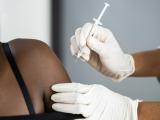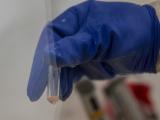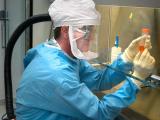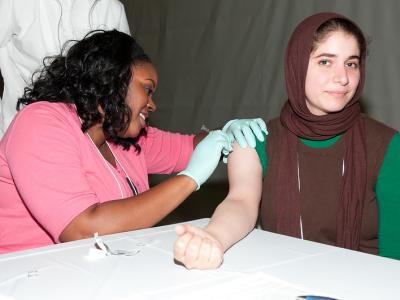Jun 16, 2003 (CIDRAP News) The US Postal Service (USPS) is poised to test anthrax detection systems at 14 mail-processing centers around the country once first responders in the local communities feel ready to deal with an anthrax alarm, according to a Postal Service spokesman.
The USPS was originally scheduled to start a 30-day test of its biohazard detection system on Jun 2, but the test was postponed because local emergency responders wanted more guidance on what to do if anthrax turns up, said Bob Anderson, a USPS public relations spokesman in Washington, DC.
"The first responders wanted more guidance or refinement from the CDC [Centers for Disease Control and Prevention] on a uniform or coordinated response in the event there was an anthrax detection," Anderson told CIDRAP News.
The USPS has been testing its detection system at a Baltimore mail processing plant for about a year, Anderson said. The next step is to test the system for 30 days at each of 14 other sites around the country. If the system works well, plans call for eventually installing the system at all mail-processing centers nationwide, he said.
The 30-day system tests are scheduled for postal plants in Dulles, Va.; Capital Heights, Md.; Albany, N.Y.; Kilmer, N.J.; Manasota, Fla.; Midland, Tex.; Tacoma, Wash.; Rockford, Ill.; Lancaster, Pa.; and Pittsburgh. Anderson said the intent is to test the equipment in a wide variety of environments, including areas where anthrax could be present naturally because of livestock.
The Postal Service began testing automated anthrax detection equipment after the anthrax-by-mail attacks of October 2001. Working with the CDC and other federal agencies, the USPS tested more than 20 systems before settling on a system built by Northrop Grumman, according to USPS news releases.
The system collects air surrounding mail-handling equipment and uses polymerase chain reaction (PCR) analysis to look for anthrax DNA, according to Anderson. The system can return a result on sampled air in as little as 30 minutes, and each batch of mail is held until it is found to be anthrax-free, he said. A positive result would cause the system to stop mail processing and isolate the potentially contaminated batch of mail, he explained.
"This system is going to contain and minimize any contamination that might be introduced into the mail stream, so we won't have [contaminated] envelopes wandering for 3 days through our system," Anderson said.
Any positive results from the detection system would be sent to a lab for confirmation, but the USPS would not wait for confirmation before evacuating the plant and calling first responders, he said. "We'll take precautions prior to the next level of testwe'll treat everything as a full-blown attack until we know otherwise."
The system used in Baltimore "has been proven incredibly reliable," Anderson said. The system has not produced any positive signals so far, either true or false, he said.
After the tests at the 14 sites, the USPS will evaluate the results and make any necessary changes in the system and procedures, according to Anderson. "We'll see how the system works, and if it's anywhere near as successful as Baltimore has been, we're fully confident we'll get the nationwide rollout of the system."
He said plans call for nationwide installation of the system in two phases, with phase 1 scheduled for January to October of 2004.
Anthrax testing will include only "collection mail," meaning loose mail that people deposit anonymously in collection boxes or leave in home mailboxes, Anderson explained. Business mail, such as invoices or promotional pieces mailed in bulk, is less likely to be contaminated, he said. "We know where that mail is coming from and have safeguards to check that mail."
The technology used in the anthrax detection system is the same type that was used to monitor the air during Winter Olympics in 2002, according to USPS background reports. That same technology also has been adapted for the federal BioWatch program, which monitors the air in major metropolitan areas for biological weapons and other pathogens.

















